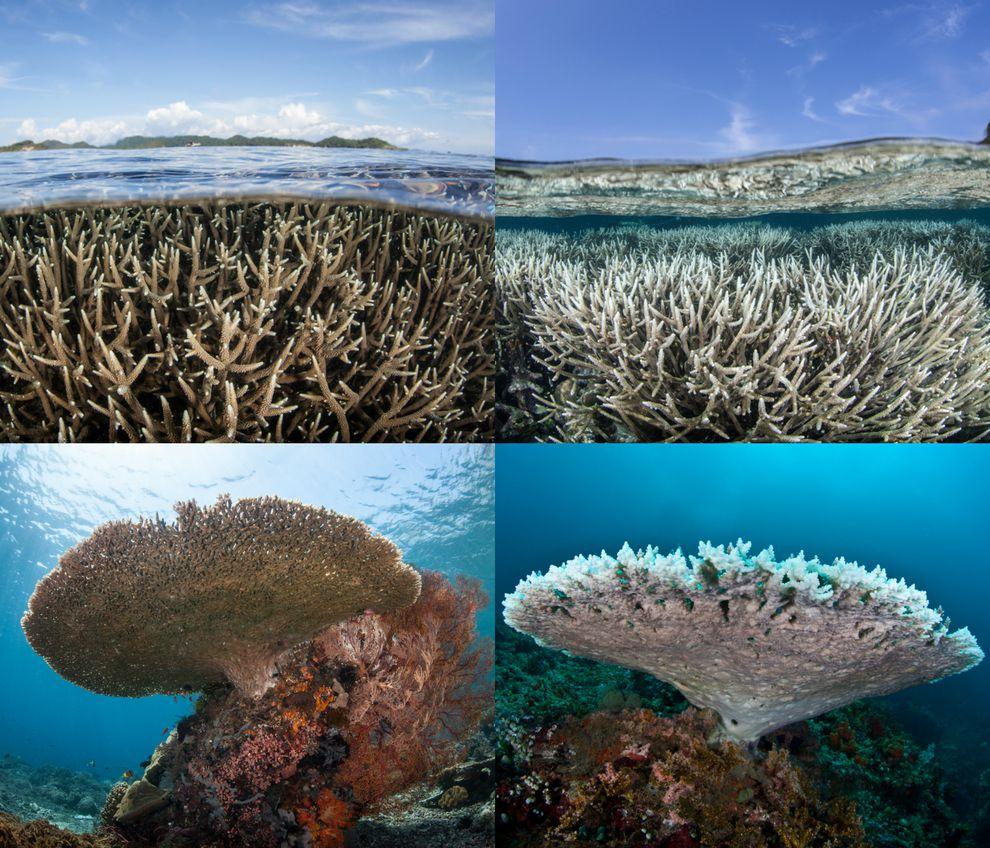
VIII. Poisoned Oceans
Sulfide burps off the skeleton coast.
That the sea will become a killer is a given. Barring a radical reduction of emissions, we will see at least four feet of sea-level rise and possibly ten by the end of the century. A third of the world’s major cities are on the coast, not to mention its power plants, ports, navy bases, farmlands, fisheries, river deltas, marshlands, and rice-paddy empires, and even those above ten feet will flood much more easily, and much more regularly, if the water gets that high. At least 600 million people live within ten meters of sea level today.
But the drowning of those homelands is just the start. At present, more than a third of the world’s carbon is sucked up by the oceans — thank God, or else we’d have that much more warming already. But the result is what’s called “ocean acidification,” which, on its own, may add a half a degree to warming this century. It is also already burning through the planet’s water basins — you may remember these as the place where life arose in the first place. You have probably heard of “coral bleaching” — that is, coral dying — which is very bad news, because reefs support as much as a quarter of all marine life and supply food for half a billion people. Ocean acidification will fry fish populations directly, too, though scientists aren’t yet sure how to predict the effects on the stuff we haul out of the ocean to eat; they do know that in acid waters, oysters and mussels will struggle to grow their shells, and that when the pH of human blood drops as much as the oceans’ pH has over the past generation, it induces seizures, comas, and sudden death.
That isn’t all that ocean acidification can do. Carbon absorption can initiate a feedback loop in which underoxygenated waters breed different kinds of microbes that turn the water still more “anoxic,” first in deep ocean “dead zones,” then gradually up toward the surface. There, the small fish die out, unable to breathe, which means oxygen-eating bacteria thrive, and the feedback loop doubles back. This process, in which dead zones grow like cancers, choking off marine life and wiping out fisheries, is already quite advanced in parts of the Gulf of Mexico and just off Namibia, where hydrogen sulfide is bubbling out of the sea along a thousand-mile stretch of land known as the “Skeleton Coast.” The name originally referred to the detritus of the whaling industry, but today it’s more apt than ever. Hydrogen sulfide is so toxic that evolution has trained us to recognize the tiniest, safest traces of it, which is why our noses are so exquisitely skilled at registering flatulence. Hydrogen sulfide is also the thing that finally did us in that time 97 percent of all life on Earth died, once all the feedback loops had been triggered and the circulating jet streams of a warmed ocean ground to a halt — it’s the planet’s preferred gas for a natural holocaust. Gradually, the ocean’s dead zones spread, killing off marine species that had dominated the oceans for hundreds of millions of years, and the gas the inert waters gave off into the atmosphere poisoned everything on land. Plants, too. It was millions of years before the oceans recovered.